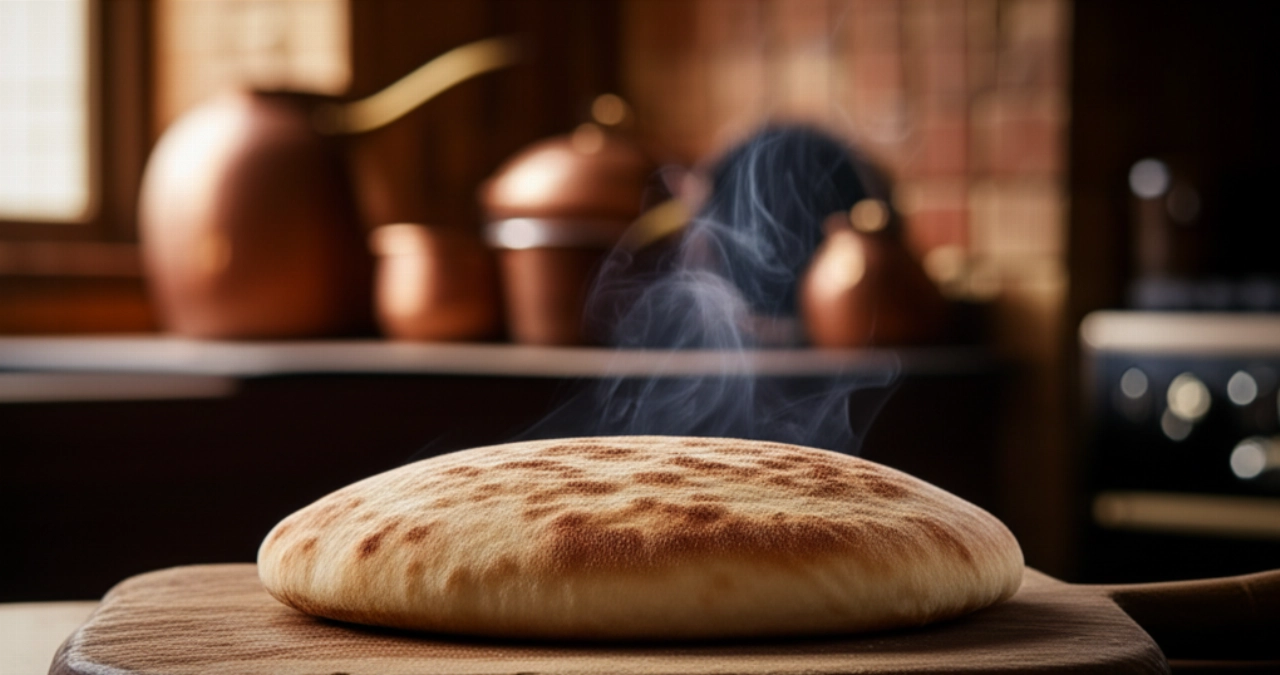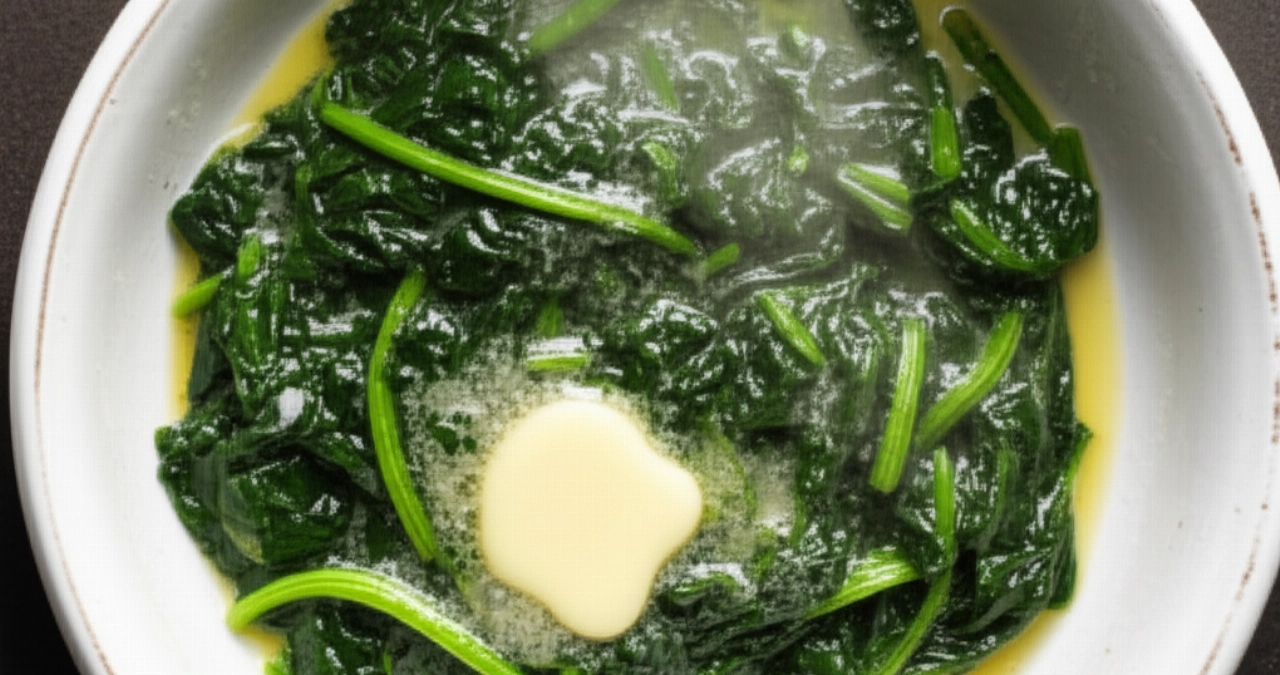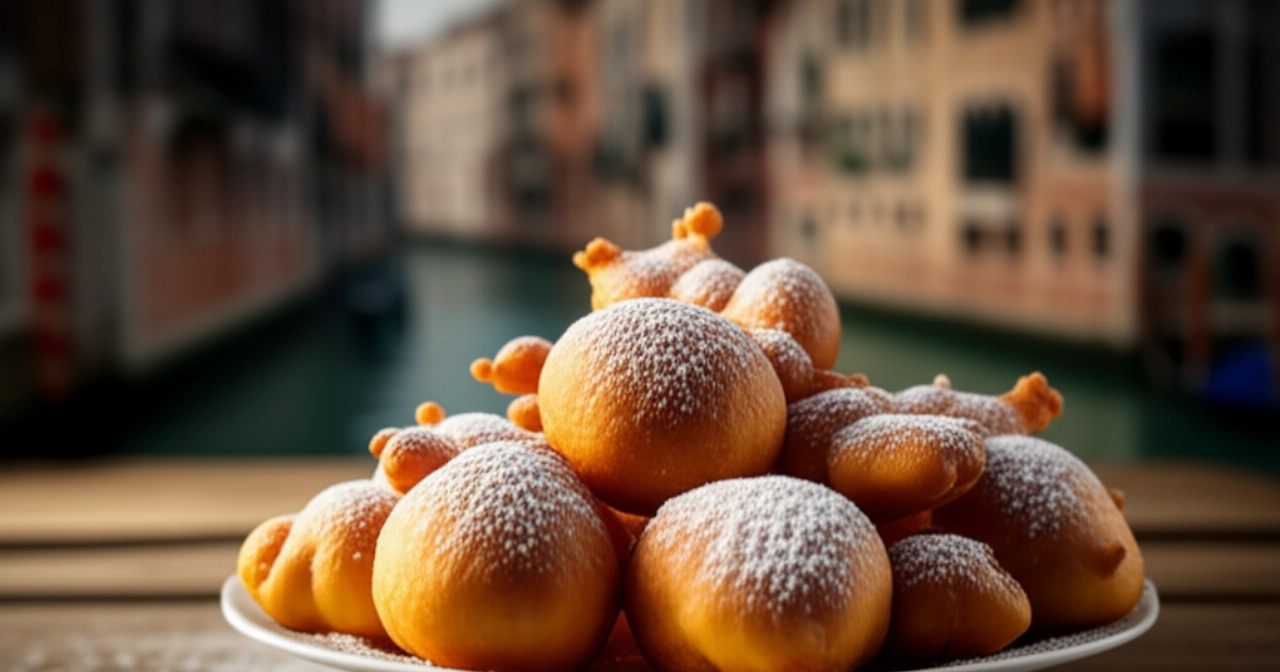Do you dream of bringing to the table a dish that tastes of history, tradition, a flavor so deep it evokes Sunday lunches in Umbria? Palomba alla Ghiotta is precisely that: a robust, enveloping main course that speaks of the territory and authentic flavors, a true embrace for the palate.
Perhaps you've tried cooking palomba, but the result wasn't what you hoped for: tough meat, bland sauce, or the fear of not respecting the true recipe. Finding the right guide, one that instills confidence and guarantees success, can seem like a challenge.
Make yourself comfortable. Here you won't just find a list of ingredients, but the definitive guide, full of secrets and tips, to prepare the most authentic and delicious Palomba alla Ghiotta you've ever tasted. I'll guide you step by step to transform a special ingredient like palomba into a masterpiece of flavor and tenderness, with a sauce so rich you'll want to 'fare la scarpetta' (mop up with bread) until the last drop, just as Umbrian tradition dictates. Success is guaranteed, and the aroma will fill your kitchen.
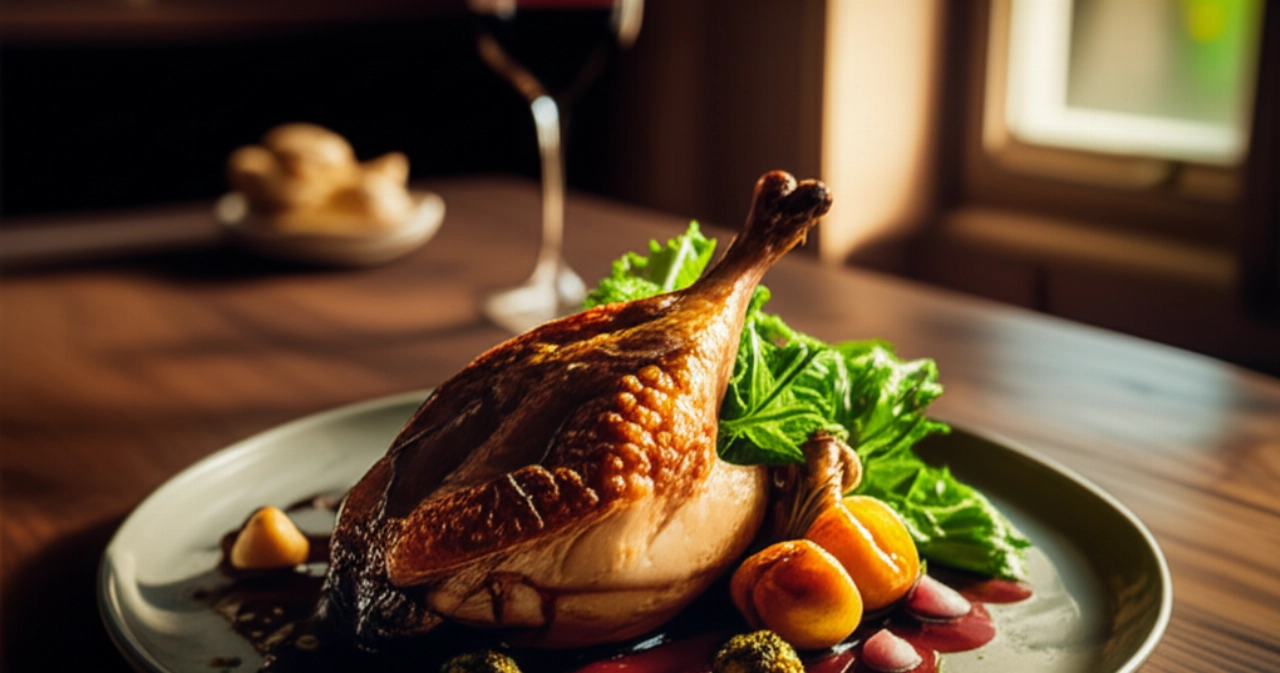
Ingredients for an Authentic Palomba alla Ghiotta: The Choice That Makes the Difference
The true magic of Palomba alla Ghiotta begins with the selection of ingredients. Each element plays a fundamental role in building that deep, enveloping flavor that makes it unique. It's not just a list, but a conscious choice.
- Palomba (or Wild Pigeon): 1 whole (approx. 800g-1kg). Choose it fresh, preferably from controlled game. The quality of the meat is the first secret for a tender and flavorful result.
- Pancetta Tesa or Guanciale: 100g. Cut into small cubes or strips. Its fat and smoky flavor are the base of the soffritto and give an unmistakable savoriness to the sauce.
- Aromatics for Soffritto: 1 carrot, 1 celery stalk, 1 medium onion. Finely chopped, they are the aromatic soul of the dish, the starting point for any good traditional sauce.
- Garlic: 2 cloves. Left whole and crushed, or minced, for a decisive aromatic touch.
- Rosemary and Sage: 2 sprigs of rosemary, 3-4 sage leaves. Aromatic herbs that pair divinely with game, adding freshness and complexity.
- Dry Red Wine: 200ml (e.g., Sagrantino, Montefalco Rosso, or a good Chianti). Essential for deglazing the cooking base, adding depth and acidity.
- Tomato Passata: 400g. Of excellent quality, thick and sweet, it will be the base of the sauce that will envelop the meat.
- Vegetable or Meat Broth: Approx. 500ml (or as needed). Hot, to thin the sauce and keep the meat moist during slow cooking.
- Black Olives: 100g (e.g., Gaeta or Taggiasche). Pitted. They add savoriness, a bitter touch, and a pleasant texture that completes the dish.
- Chili Pepper (optional): A pinch, for those who like a spicy note.
- Extra Virgin Olive Oil: q.b. (as needed)
- Salt and Black Pepper: q.b. (as needed)
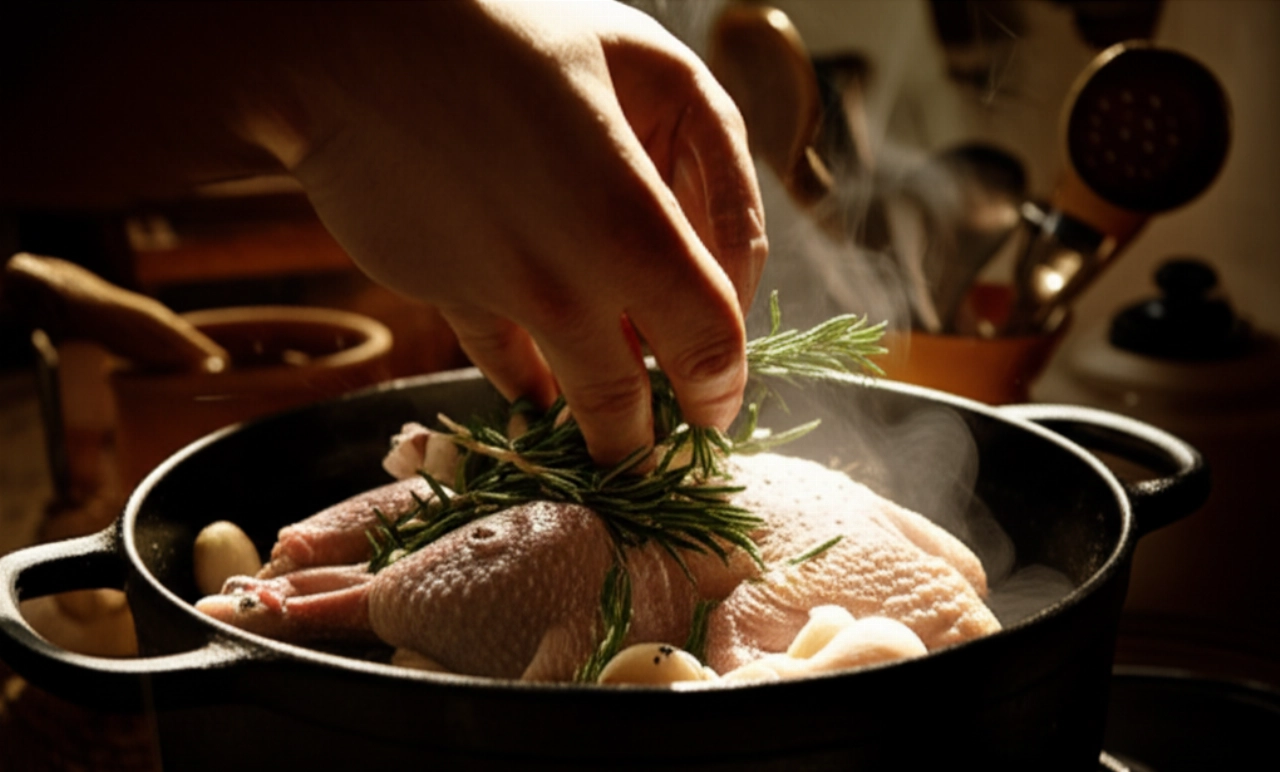
3 Common Mistakes in Preparing Palomba (and How to Avoid Them)
Even the most experienced cooks can make small mistakes that compromise the final result. But don't worry, I'm here to reveal the tricks and help you avoid the most common pitfalls, guaranteeing you a Palomba alla Ghiotta worthy of applause.
- Insufficient or Excessive Cooking: Palomba is a meat that requires attention. If cooked too little, it will be tough and rubbery. If cooked too long over high heat, it will become stringy. The secret is slow cooking over low heat, which allows the meat to gradually tenderize, absorbing all the flavors of the sauce. Always check for tenderness with a fork.
- Lack of Initial Browning: Skipping or rushing the browning phase of the palomba is a serious mistake. It is at this moment that the meat develops a golden crust and seals in its juices, creating the base for a more intense and complex flavor. Brown the palomba well on all sides, until it is nicely colored.
- Not Using Quality Ingredients: Palomba alla Ghiotta is a dish that highlights its raw materials. Using palomba that isn't fresh, low-quality pancetta, or bland tomato passata will irrevocably compromise the final flavor. Invest in fresh, quality ingredients: they will make the difference between a good dish and a masterpiece.
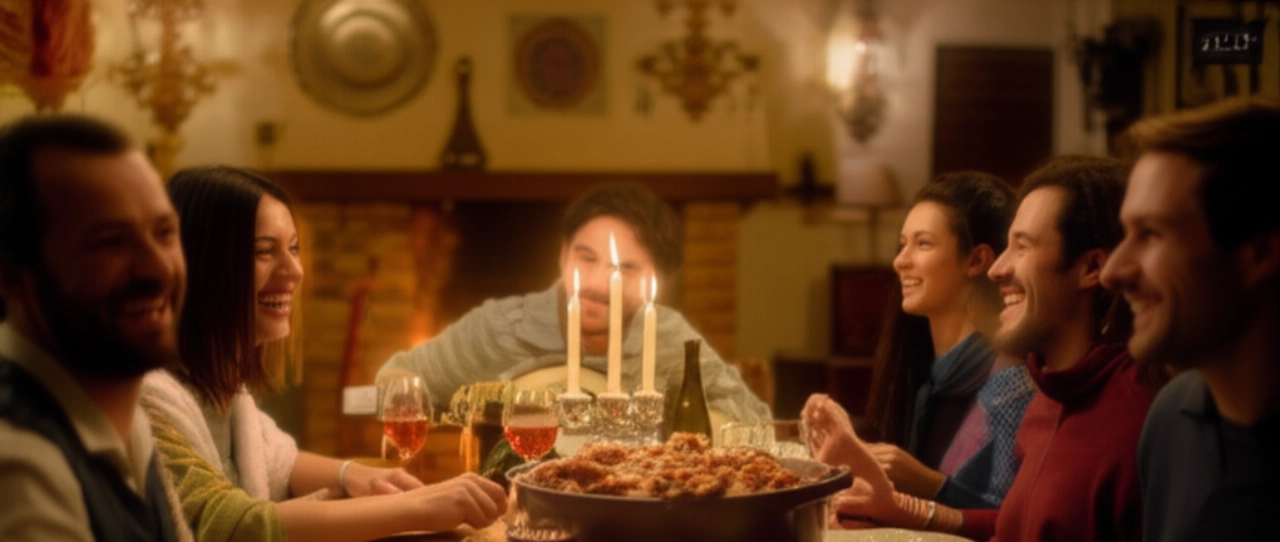
The Extra Touch: The Umbrian Secret for an Infallible Palomba
My grandmother, who was a true master of Umbrian cuisine, always said: “The true ghiotta is also made with the heart!” And she meant exactly this: don't throw anything away from the palomba. Her secret for a sauce with incredible depth of flavor and unique creaminess was to add the finely chopped palomba livers to the soffritto. While browning the pancetta and aromatics, also add the minced livers and let them flavor. They will almost completely dissolve, enriching the sauce with a wild note and a natural richness that few know. It's a small gesture, but one that elevates the dish to a higher level, a true home chef's touch.
Let's Prepare Palomba alla Ghiotta Together: The Step-by-Step Guide
Now that we have all the secrets and the right ingredients, let's get cooking! Follow each step carefully, and you'll see that the result will be an unforgettable dish, just like grandma's.
- Prepare the Palomba: Carefully clean the palomba, flame it to remove any residual feathers, and wash it well. Dry it with paper towels. You can leave it whole or cut it into pieces (thighs, wings, breast divided in two). If you decide to use the livers, mince them finely.
- Prepare the Soffritto: In a large, heavy-bottomed saucepan (a cast iron Dutch oven is ideal), heat a generous drizzle of extra virgin olive oil. Add the diced pancetta or guanciale and let it brown over medium heat until crispy and it has rendered its fat.
- Add Aromatics and Herbs: Add the finely chopped carrot, celery, and onion, crushed (or minced) garlic, and sprigs of rosemary and sage to the soffritto. If using minced livers, add them now. Let it sauté gently for about 10-15 minutes, stirring often, until the vegetables are soft and translucent.
- Brown the Palomba: Move the soffritto to one side of the saucepan. Add the palomba pieces and brown them on all sides over high heat until they have a nice golden color. This step is crucial for flavor.
- Deglaze and Add Tomato: Once browned, deglaze with red wine. Let the alcohol evaporate completely, scraping the bottom of the pot with a wooden spoon to release all the flavors. Add the tomato passata, a pinch of chili pepper (if using), salt, and pepper.
- Slow Cook: Stir well, then add hot broth until the meat is almost completely covered. Bring to a boil, then reduce the heat to minimum, cover with a lid, and let it slow cook for at least 1 and a half hours, or until the meat is very tender and easily comes off the bone. Stir occasionally and add more broth if the sauce dries out too much.
- Add Olives: About 15-20 minutes before the end of cooking, add the pitted black olives. Let them flavor in the sauce.
- Rest and Serve: Once cooked, remove the palomba from the heat and let it rest for a few minutes in its saucepan, covered. This allows the juices to redistribute, making the meat even more tender. Serve the Palomba alla Ghiotta hot, accompanied by its rich sauce. It's perfect with soft polenta, creamy mashed potatoes, or simply with plenty of bread for 'scarpetta' (mopping up the sauce)!
Tips and Frequently Asked Questions about Palomba alla Ghiotta
Here are some of the most common questions you might have, with answers that will help you perfect your dish.
Can I use another type of meat if I can't find palomba?
Certainly, you can adapt the recipe using free-range chicken or rabbit pieces. However, keep in mind that the flavor will be different, as palomba has a unique and characteristic game taste. Cooking times might vary slightly.
Is it possible to prepare Palomba alla Ghiotta in advance?
Absolutely yes, in fact! Like many traditional dishes, Palomba alla Ghiotta is even better the next day, when the flavors have melded well. You can prepare it a day in advance and gently reheat it before serving.
How can I store leftovers?
Leftovers of Palomba alla Ghiotta can be stored in an airtight container in the refrigerator for 2-3 days. You can also freeze it in single portions for up to 2-3 months. Thaw it in the refrigerator and reheat over low heat.
What is the best wine to pair with this dish?
To enhance the robust flavors of Palomba alla Ghiotta, I recommend a full-bodied and structured red wine. A Sagrantino di Montefalco, a Montefalco Rosso, or a Chianti Classico are perfect pairings that harmonize beautifully with game and the rich sauce.
Why did my palomba turn out tough?
Tough meat is often the result of insufficient or too fast cooking. Make sure to cook the palomba over very low heat and for the necessary time, until it is very tender. Don't rush: patience is the key to juicy meat.
There you have it! Now you hold not just a recipe, but all the secrets to bring a piece of Umbria to your table, a dish that speaks of tradition, authentic flavor, and love for good food. Every bite will be a journey, an emotion.
Don't be afraid to challenge yourself. Cooking is a journey of discovery and an act of creativity. With this solid and reliable guide, success is guaranteed, and applause will be your reward, because you will have prepared a dish that tastes of home, celebration, and heart.
Have you prepared our Palomba alla Ghiotta? We can't wait to admire your masterpiece! Leave a comment below, tell us about your experience, or share a photo on Instagram by tagging @CercaRicette.it. If you loved this dish, don't miss our recipe for Castelluccio Lentils or for an unforgettable first course like Truffle Strangozzi.

